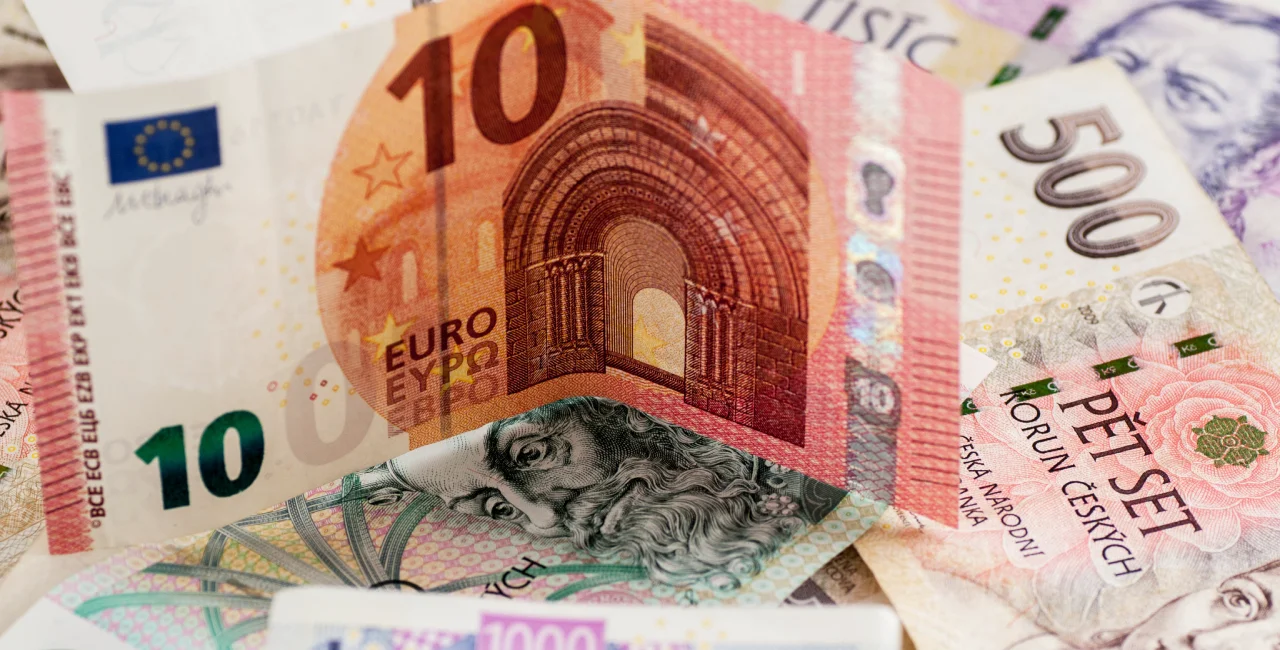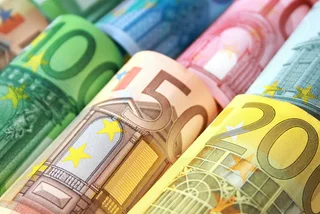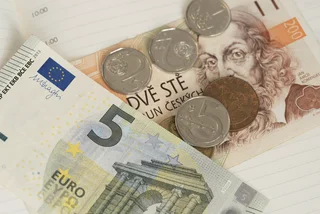The Czech crown – in recent months surging in value against the euro – could yet strengthen further, Novinky.cz quotes analysts as saying. This is good news for people spending crowns abroad, as the purchasing power of the national currency continues to strengthen in many European countries.
Consistent, strong progress
At the time of writing, the crown trades at about EUR 1: CZK 23.4, having recently hit a 15-year high against the European currency. In contrast, this time last year the crown was valued at CZK 24.4 for EUR 1.
In 2022, the crown strengthened by 3 percent against the euro, making it by far the best-performing currency in the Central and Eastern European region. Between 2019 and 2022, the Czech currency appreciated by 5.4 percent, performing much better than other European currencies.
The crown is also doing well against the U.S. dollar (at about USD 1: CZK 21.3 presently), recently reaching a one-year high.
Radim Krejčí, analyst at financial services firm Portu.“The Czech currency is supported by a positive mood on the capital markets, a high interest rate differential, and the cooling of inflationary pressures.”
This strong progress against both major currencies may well continue.
Actions by the Czech National Bank (CNB) have greatly helped in keeping the crown strong. According to analysts, the strong exchange rate helps the CNB fight inflation. In 2022, the CNB artificially used CZK 700 billion from foreign-exchange reserves to strengthen the national currency.
The Czech crown is also seen by global investment firms and individuals as a “safe-heaven currency,” which increases its appeal and helps its appreciation.
Not an unequivocally good thing
A strong exchange rate doesn't necessarily benefit everyone, though. Czechia's exporters can be harmed by a strengthening crown due to their goods becoming more expensive for foreign buyers, potentially hurting demand.
A strong exchange rate also has the potential to harm domestic producers, due to increased competition from cheaper imports.
Domestic firms that typically borrow in foreign currencies can also be negatively affected by a stronger crown. This is because a stronger exchange rate can increase the cost of repaying foreign-currency loans for domestic firms.
More for less, when visiting other countries
What does this mean if you live in Czechia and want to travel to places abroad? Good news – your crown will go further in most instances.
New analysis shows in which countries the crown is especially valuable. Kosovo, Moldova, and North Macedonia are the three touristic destinations where the currency is strongest.
For example, in Kosovo, CZK 1,000 would buy you the equivalent of over CZK 2,100 worth of goods and services, if spent in Czechia.
Where does CZK 1,000 go furthest in Europe?
- 1.Kosovo - CZK 2,186
- 2.Moldova - CZK 2,031
- 3.North Macedonia - CZK 1,920
- 4.Bosnia and Herzegovina - CZK 1,850
- 5.Montenegro - CZK 1,671
- 6.Albania - CZK 1,580
- 7.Romania - CZK 1,487
- 8.Bulgaria - CZK 1,476
- 9.Serbia - CZK 1,377
- 10.Hungary - CZK 1,315
Note: Currently touristic destinations. Crown values are approximate calculations for costs of equivalent goods and services in Czechia
Your Czech money will also increase by around 50 percent in value when heading to Bulgaria, Romania, and Montenegro.
In neighboring Slovakia and Poland, your crown is also a little stronger: you can buy CZK 1,200 worth of goods and services with CZK 1,000.
The Czech currency also has more spending power in Spain, Portugal, Greece, and Estonia compared to at home.
In 25 of the 43 European cities surveyed, the Czech crown’s spending power is higher outside the Czech Republic.
Unsurprisingly, the Czech crown drops in value when heading to most of western and northern Europe, including Finland, Austria, and Germany. In Norway, for example, CZK 1,000 would only buy you the equivalent of about CZK 750 worth of goods and services offered in Czechia.
AND WHERE DOES CZK 1,000 perform worst in Europe?
- 1.Switzerland - CZK 572
- 2.UK - CZK 604
- 3.Ireland - CZK 638
- 4.Liechtenstein - CZK 663
- 5.Iceland - CZK 674
- 6.Denmark - CZK 693
- 7.France - CZK 736
- 8.Luxembourg - CZK 738
- 9.Norway - CZK 750
- 10.The Netherlands - CZK 762
Note: Currently touristic destinations. Crown values are approximate calculations for costs of equivalent goods and services in Czechia
Will this continue?
Petr Lajsek, a principal analyst at Czech financial services company Purple Trading, believes that the Czech crown is likely to strengthen in the short term. The currency, however, may depreciate in the second half of this year if the CNB decides to lower interest rates (this is something especially likely if headline inflation falls). Two months ago the CNB decided to keep interest rates unchanged – they are currently the highest they have been in over two decades.
Some analysts, such as Creditas Bank chief economist Petr Dufek in ČT24, believe that the crown will not be able to sustain its strong growth. A currently weak macroeconomic foundation – based on still-high inflation and a massive public deficit – is to blame. The CNB should also be aware that the amount of foreign-exchange interventions it can do is limited, Dufek adds.
With inflation set to eventually reduce and continued CNB interventions thus less likely, it remains to be seen whether the crown can continue its impressive streak. One thing is for sure, though – Czechs should take this moment to make the most of the crown’s impressive strength.












 Reading time: 4 minutes
Reading time: 4 minutes 






























